
Non-fiction and scifi author Risto Isomäki looks a little lost.
We’re in the Kamppi shopping center, bathed in the eye-watering electric lights of the top floor’s restaurant complex. Fashionable people zoom past on their Christmas shopping sprees.
Isomäki, attired in hiking boots and a hefty coat, appears as though he’s just arrived from a birdwatching retreat. Nature conservation is his greatest passion, which is exactly why we at Ylioppilaslehti want to talk to him.
”I’ve never been here before,” Isomäki comments politely and stops to admire some seasonal decorations.
Trendy and pioneering gourmets gravitate towards this high rise realm of fusion cuisine and vegetarian fare. That same demographic is now discovering insects as an ingestible ingredient, found all over the mall’s food courts in various forms.
Cricket bread, cricket granola, cricket sausage, cricket chocolate, cricket steak… The list goes on.
But bug food isn’t just in vogue, some also hail it as the key to saving the planet. With Isomäki’s help, we’re going to try to see whether creepy crawlies can save the world or not.
A thrust toward dining on insects came in 2013. The UN’s Food and Agriculture Organization (FAO) hailed insects as the food of the future. More than 2 billion people aready ate them as part of their common diet – and it was everyone else’s time to learn.
The FAO deemed that insect protein would help feed the growing human population. Where it takes 10 kg of feed to produce one kilo of beef, the same amount of resources can be used to sustain 9 kg’s worth of crickets. Insects take up less space than cows and pigs, and the freed up arable land could be used to grow vegetables. The meat industry’s emissions would go down, and the pollution of the atmosphere and the seas would be curbed.
Another concern that the UN felt supported the invertebrate introduction was for the weakening benefits of the antibiotics being administered to livestock. Disease-causing bacteria in animals had learned to resist the antibiotics used as treatment as well as a growth precipitator in cattle, in the United States especially. Crickets and mealworms would need no such drugs.
It’s enough to let your imagination run wild. Good riddance to environmental fugitives and hunger-induced conflicts!
And last September the Ministry of Agriculture and Forestry announced that Finland would alter its interpretation of the EU’s directive on novel food. It meant that insects would now be allowed to be sold as food under food safety regulations.
It also ended the need for farcical displays. Entrepreneurs got invested in the insect biz before the government, and had been peddling their products in eco shops as ”kitchen decorations”.
That seems like a long time ago. Out-of-the-way little grocery stores are ordering up cricket loafs and cricket steaks practically every week, and cricket sausages, too.
Is this how we’re going to avoid the destruction of planet Earth?
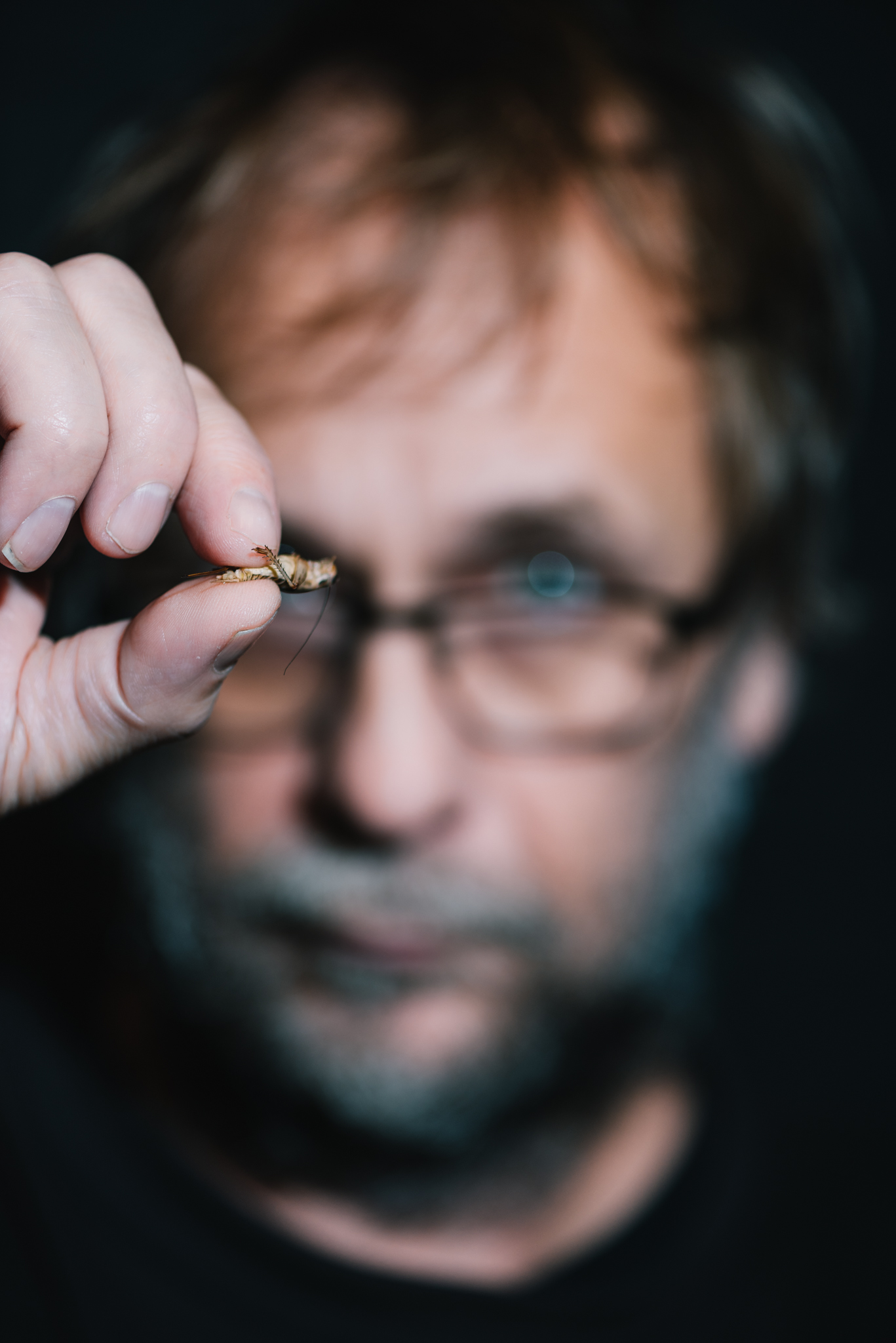
Isomäki, at least, has a vision of how it might all end.
His 2005 eco thriller The Sands of Sarasvati, which stood as a Finlandia Prize candidate, is about climate change as caused by humankind. It makes for chilling reading: set as early as 2020, in the story researchers the world over from the Indian Ocean to Arctic Greenland are reporting Doomsday signs. The ice caps are melting, and a megatsunami threatens populated coasts. The unnerving dystopia was even being made into a motion picture, directed by Aku Louhimies (most recently of Unknown Soldier fame). Eventually plans were scrapped in favor of an international TV series, in the works under production company Luminoir.
In his 2008 non-fiction book covering 34 ways to keep the Earth from overheating, Isomäki suggests a drastic downsizing of the meat industry as a potential solution.
And that’s why we’re also talking about crickets.
”The biggest surprise for me has been how fast people have taken to the idea of insect food,” Isomäki says.
The author says the only meat he eats is in the form of seafood. But he also says he sees potential in bugs, describing how they are virtually impossible to grow without their production being anything but ”substantially more ecological” that the cattle industry. For one, insects can usually be eaten whole, while only 40 percent of a slaughtered cow ends up in people’s mouths.
The biggest upheaval would be if every person on Earth became vegan. If such a thing were possible, Isomäki says the projected effects would be staggering.
”We’d free up four billion hectares of grazing fields, two billions hectares of forests cut down to create them in the first place, and a billion and a half hectares of arable soil from cattle feed production.”
Even so, switching over to crickets would be an enormous shift.
And what if we just keep on trucking like we always have?
”Modern coral reefs would be the first to disappear as the seas acidify,” Isomäki explains.
”If we aren’t able to shrink our carbon emissions, this will come to pass in around 2080. It would be quite a thing: 500 million people are completely dependent on coral reef ecosystems, with a full three billion people being affected by it somehow.”
In this scenario, seafood could no longer be produced, as the reefs are significant safe spaces where numerous fish species breed, Isomäki continues.
The human race would also eventually face mass extinction.
”Jellyfish would still be around. They’re the one species in the oceans that outright thrives on global warming and the acidification of the waters.”
And so we press on.
Research suggests that Finland may be on the brink of a practical insect revolution. Studies from the universities of Turku and Eastern Finland even tout Finns as the most pro-bug nation in the world. Some 70 percent of respondents said they felt positively toward the potential of insect protein, while the figure in Sweden and the UK is at half of that, 35 percent.
Did the people who responded in the study want to appear unprejudiced and modish?
Professor of food culture Mari Niva from the University of Helsinki says she believes the figure to represent Finnish attitudes aptly. The current insect boom, she says, is the sum of several phenomena. The first is the positive publicity received by domestic startups and their bug-based brands.
”There are even hints at some sort of heroic tale: young entrepreneurs are developing products that they’re not even allowed to sell. It gives the impression of sincere action for the common good,” says Niva.
The second variable is that Finnish consumers have proven to be open-minded in the past. Just look at the 90s, when the allegedly healthier Benecol brand of margarine was all but sold out of stores. And sushi didn’t remain the fancy dish of small circles, instead becoming a favorite buffet staple.
”Finnish food culture is very open: we’ve been influenced by both eastern and western cuisines and even done a bit of inveting on our own,” Niva says.
”It’s a far cry from Italy or France, where the norms for what constitutes proper food are much stricter.”
A high level of education may also have something to do with an affinity for adapting to new things. If something is proven to be environmental as well as healthy, Finnish people are in, Niva says.
And that’s what insect-fortified foods have certainly been marketed as.
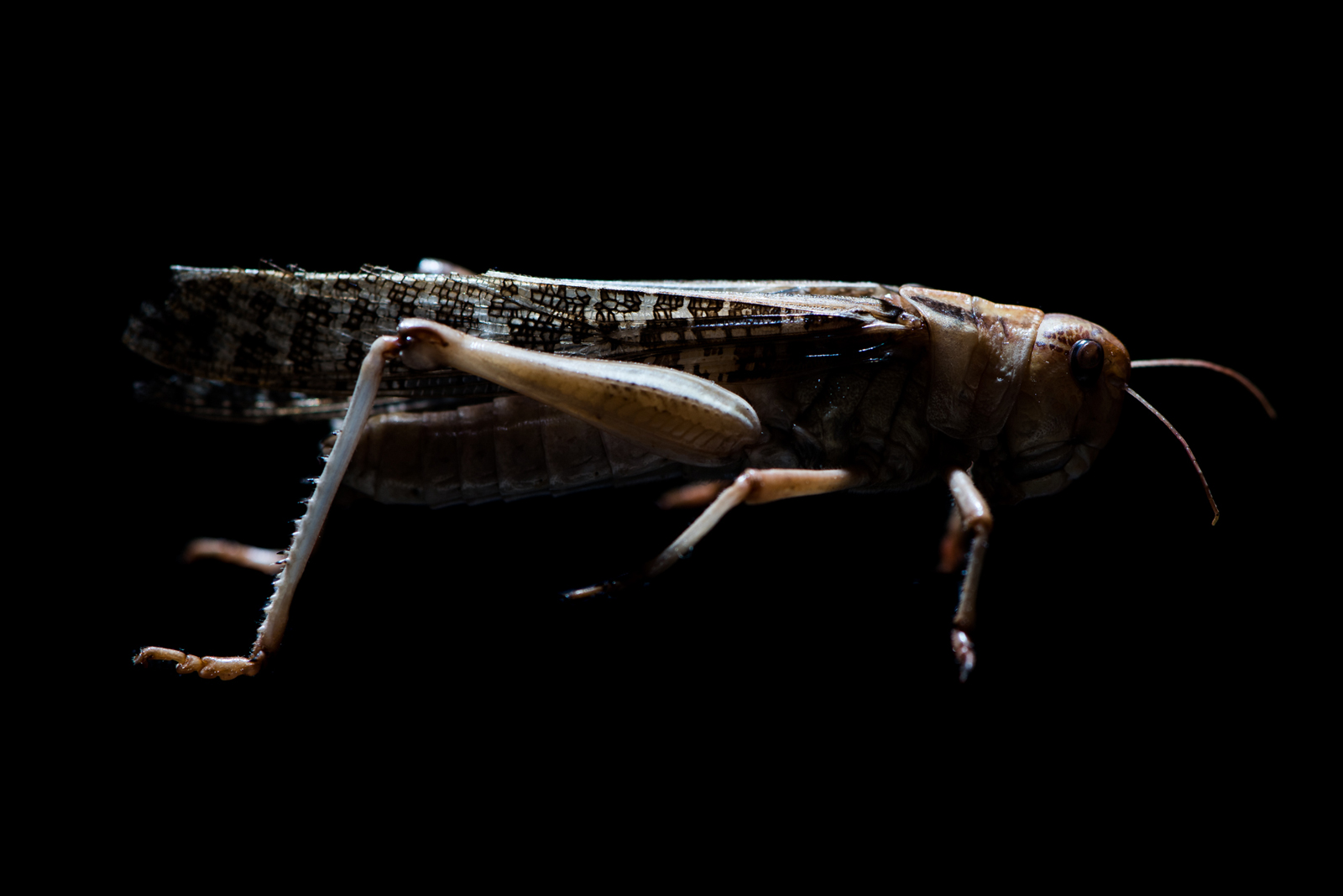
AD: Tuomas Järvenpää. Styling: Ida Thompson Coon.
The innovation chief for food industry giant Fazer, Juhani Sibakov is dressed in a blazer the very shade of his company’s signature blue hue. He receives the guests at the Kamppi K-Supermarket’s outlet bakery.
The bakers here began baking cricket bread the very moment it became legal, in early November. All told, Fazer has 17 bakeries at the task across the country.
Sibakov rattles off the familiar spiel:
Cricket bread is the food of the future. We here at Fazer have followed this trend closely. Our company is the first in the world to produce insect-fortified bread.
Cricket bread is a prize horse: produced by a huge company and easily accessible. The shelves are bare of the sought-after loaves. Instead, one lone meat pasty sits dejectedly in their place, discarded.
The bread itself looks like an ordinary loaf of oven-baked bread. We tore into it and peeked inside. No sign of any grasshoppers or such, even though there are about 80 of them in this one piece. They’ve been ground up and innocuously added to the dough. It tastes ordinary too, fairly salty.
The package designs screams ”environmental”. The pale green paper bag is made from recycled materials. But why does it say the insect powder comes from the Netherlands, when Finland has cricket farms of its own?
Fazer, apparently, means to phase into domestic bugs.
”This is such a new game that there aren’t enough crickets around yet to be used on an industrial scale,” Sibakov says.
Isomäki has listened to all, apart from the others, staring at the ground. Any questions?
Plenty.
”What sort of food are the crickets fed when they’re being grown? How much vegetable matter do they consume that humans can’t eat? Do they need something else?” Isomäki asks.
Sibakov answers that the feed the insects are given is the same as ”the kind meant for chickens or similar livestock.”
”It has to be clearly standardized,” Sibakov says.
”It contains components that people don’t eat, so it’s ecological in that sense. Growers have their own standards – industry secrets – that they usually don’t divulge. Developed practices such as those are considered confidential.”
Isomäki is not satisfied, but brings up the feed again. It should be checked for fish meal or other animal-based proteins. And if some is found, in what quantities?
Sibakov says the ingredients of the feed is ”certainly important in terms of ecology.”
”It’s mainly vegetable material. And any animal protein would be suitable for human consumption. So if you compare that to the meat industry generally, then…”
Isomäki interrupts him.
”Yeah, that’s where the conversation always ends up, that crickets are always more ecological than cattle. But really, it should be easy to know whether the feed the insects are given contains any given ingredient, and whether it is actually as ecological as it claims to be. That way the damage is smaller, before social media starts digging and speculating.”
The conversation ends, and we push on.
Later Isomäki explains his interest in the fodder. He doesn’t go on about it for nothing.
”When humans began to keep domestic animals, the idea was that they changed inconsumable food into people-friendly fare,” he says.
Thus a cow consumes hay, and humans can consume its milk and flesh. This is not how the contemporary livestock industry operates anymore. But the same idea should be true of crickets, as well.
”They can basically eat anything. If the food they were fed contained something partially or wholly consumable by humans, they would no longer count as an ethical food to produce.”
Fazer responds to Isomäki’s many queries later in the form of an email.
”The feed currently being used contains a maximum of 3 percent animal-based ingredients. A cricket farmer has already successfully tested a fully vegetarian feed mix and will be shifting to it during spring 2018,” Sibakov writes.
Isomäki’s Holmesian mind leaps to the next question – this time about the ingredients of this supposedly vegetarian feed.
”The level of ecology that insect-fortified food can reach depends more than anything on how much of the feed they are nourished with is inedible to humans,” he repeats.
It seems that for the final verdict we’ll have to take another trip.
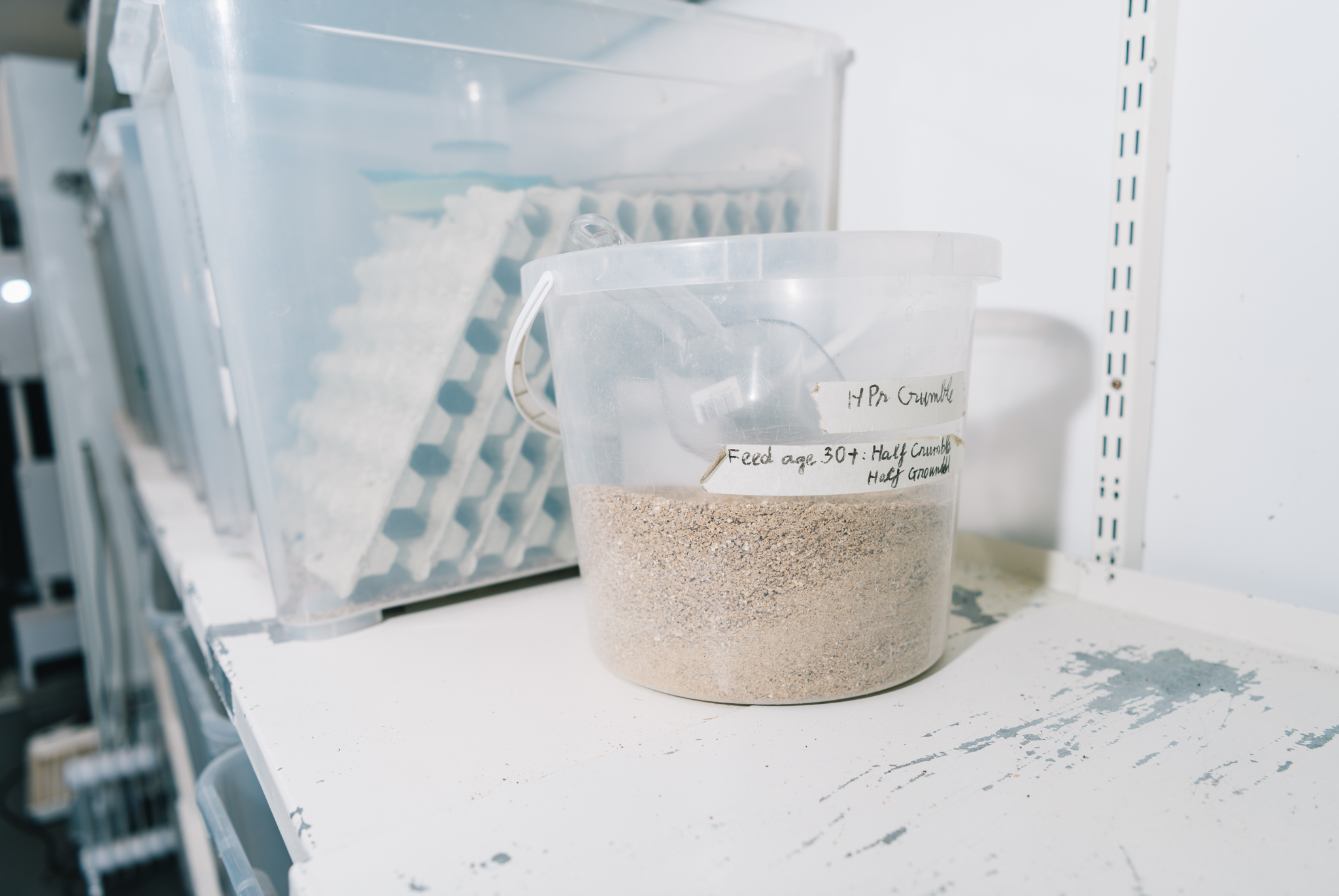
Thousands of crickets writhe in a clear plastic bag. They are thirty days old and ready to be harvested. The creatures are transferred to a freezer, where they will begin to hibernate and finally perish.
The word ”harvest” is used in Finnish, too (as the lexical borrowing harvestoida); a pale euphemism for what is essentially mass execution.
”It’s not a bad way to go,” Isomäki says, watching the wriggling bugs.
We’re in Otaniemi, Espoo in the back yard of business accelerator Startup Sauna. Isomäki peeks inside an old cargo container, which houses a cricket farm: rows upon rows of plastic boxes filled with the animals. It’s also a sweltering 34 degrees Celsius within, so that the hatching crickets can reach maturity quickly. One box produces about 5,000 crickets, a kilo and a half.
Entocube is one of the pioneering companies in the Finnish insect nutrition game. Only last autumn they, too, were selling their product – cricket granola – as kitchen accessories.
”You ever tried bugs?” asks the founder, Robert Nemlander, M.Sc. as he serves up some of his prime grub.
”I have actually, in Africa and Asia,” Isomäki replies and recalls his first termite-eating experience in Kenya.
”The elders of the village watched curiously to see if a Westerner had the courage to try them. But I saw everyone else digging into them, so I figured why not.”
That’s what dining on insects used to be: a daredevil spectacle on programs like Fear Factor or Madventures. An exotic performance grossly unfit for Finnish dining tables.
Companies such as Entocube have lobbied furiously against that unsettling image. The Ministry of Agriculture said as much in their release last fall; insect food was freed up because ”Finnish consumers and businesses alike have taken a growing interest in farming and utilizing insects as a foodstuff.”
Here at the alleged cutting edge of modern bugdom, guests are plomped into comfy armchairs and treated to a slideshow that includes footage of the King of Sweden’s visit and of Prime Minister Juha Sipilä, seen having seconds at a fried cricket spread.
For Entocube, everything started in 2013 when Nemlander wanted to develop containers for farming crickets that could eventually be transported to developing countries the world over.
Isomäki scribbles notes onto a folded piece of A4 paper.
”We realized that we were doing things the wrong way around,” Nemlander describes.
”We don’t need to export insect food to developing countries, but rather we should develop the methods here first and get the West interested in insect protein.”
”I couldn’t agree more!” Isomäki pipes up, and continues.
”Poorer countries always end up mimicing richer ones. If the insect and vegetarian revolution starts with us, there’s a greater chance that it will catch on globally, too.”
Isomäki has worked as an activist for local development projects over the course of several decades; in Kenya, Tanzania, Bangladesh, India, and other countries. He says that impoverished countries following in the lifestyle footsteps of more well-to-do nations is a real phenomenon.
”Colonialism has left its mark on these countries,” he says.
”The massive scale of humiliation has scarred them so deeply that they need many generations to recover.”
From this perspective, traditional insect food may seem primitive and blasé in regions where it has been a staple for centuries.
Isomäki says that the worst-case scenario is that animal-based food consumption will escalate exponentially in poorer countries.
One dissertation from the University of Turku predicts just this. Researcher Francesca Allievi says meat consumption is on the rise in the world. It makes little difference that the rich regions of North America and Northern Europe have cut down on their meat-eating, because the increasingly prosperous Eastern Asian countries are eating ten times more meat in the 2000s than in the 1960s.
The cricket biz would have to charm people in these places, too, where steak, ham, sausage, and poultry are just breaking through in a big way.
And not just them.
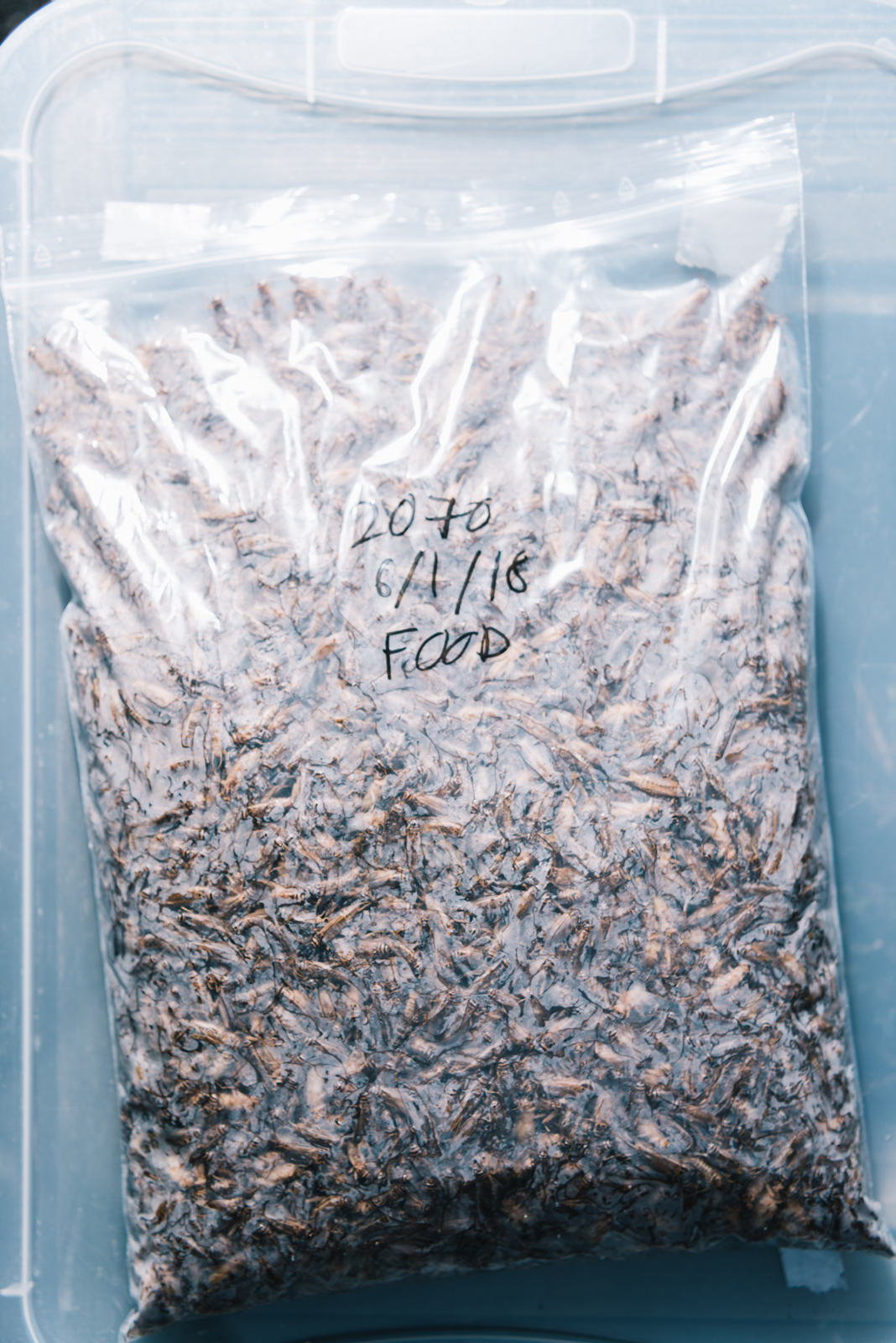
More and more consumers in Finland express the desire to choose their food based on the wellbeing of animals. People care whether the chickens whose eggs they devour have actually lead the happy lives that marketing tells us they have.
Insects are not vegetarian, but can they still count as ethical food?
”First we have to decide what we mean by ethical,” says philosopher and researcher Elisa Aaltola from the University of Eastern Finland.
”Are we talking about ecological ethics or also animal welfare ethics?”
Speaking to the latter, the popularity of crickets may in some sense alleviate the suffering of, say, pigs. But Aaltola says that the insect world is capable of feats of the mind that deserve our attention.
Research shows that insect brains are small, but extremely effective. In part, they exhibit traits similar to the brains of vertebrates, which could mean that insects can feel pain and hunger – and maybe even comprehend themselves as part of a species and an environment.
”It’s easier for us to see cognitive, human-esque emotions and processes in mammals, for instance. We feel no recognition when we observe insects,” says Aaltola.
She also urges people to consider the issue in terms of quantity. Just one of Fazer’s cricket-infused loaves contains 80 crickets’ worth of meal.
”The high quantity of animals to be killed is relevant to our ethical deliberation.”
Isomäki does not share this idea of a cricket’s emotional scale. He believes that they may only have a ”small spark of consciousness, and that they are definitely incapable of mourning for the loss of a member of its family like mammals or birds.”
Farmed crickets live longer on average and in less stressful conditions than their wild counterparts, says Isomäki. The way their lives end is also merciful to him: a slow sinking down into torpor.
The author says crickets are significantly different from mammals and birds, in that they live better lives as livestock than they do in their natural habitats.
”The world of wild insects is full of horrors that we can’t even properly wrap our heads around. Predatory insects chop their prey slowly into little pieces, digest them with acids, store them alive in their nets, or lay eggs inside of them.”
In the offices at Otaniemi, the slideshow is reaching its crescendo. Isomäki leans forward in his comfy chair.
The slides show that Nemlander was once admitted into an international astronaut training program. One of the things he did was conceptualize and design protective structures for a colony on Mars. The training was interrupted, but one nagging question remained.
What should humans eat on their way to Mars, and eventually while living there? What could be easily stored? What sort of food production could be automatically maintained in the Martian deserts right at the beginning of humankind’s first steps there?
Well, not to put too fine a point on it – insects.
”Fascinating!” Isomäki exclaims, and he is out of questions for now.
Before we take our leave we take another look at the cricket boxes in the cargo container. The feed placed nearby catches Isomäki’s eye. What’s in it?
”Many producers use chicken feed,” says Nemlander.
”Our fodder has been optimized to be the perfect match with the crickets. It is wheat-based and contains no soy. It is also a domestic product. After switching to this stuff, our harvests have grown by 50–100 percent.”
Isomäki later says that this still isn’t an answer. But he understands that trade secrets can’t be cracked with a barrage of queries.
It’s time for the final verdict. Will insect food save us all?
”I would say that the world will actually be saved by old-fashioned vegetarian food, in vitro meat produced in labs, as well as animal product substitutes created from vegetables and fungi. But after these, insects could become the second most important food production staple around. Bigger, that is, than something like fishing.”
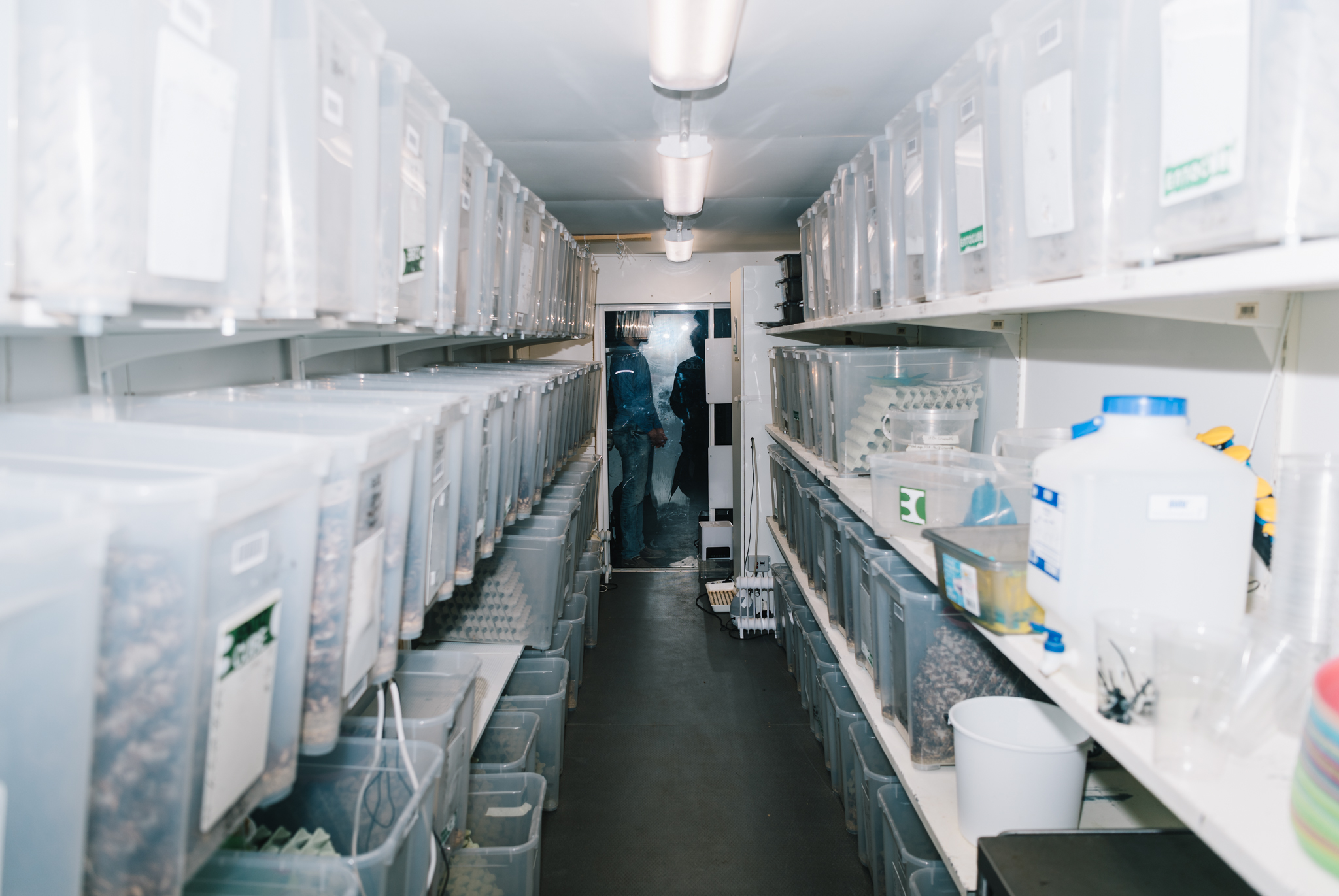
Translated by Kasper Salonen.


